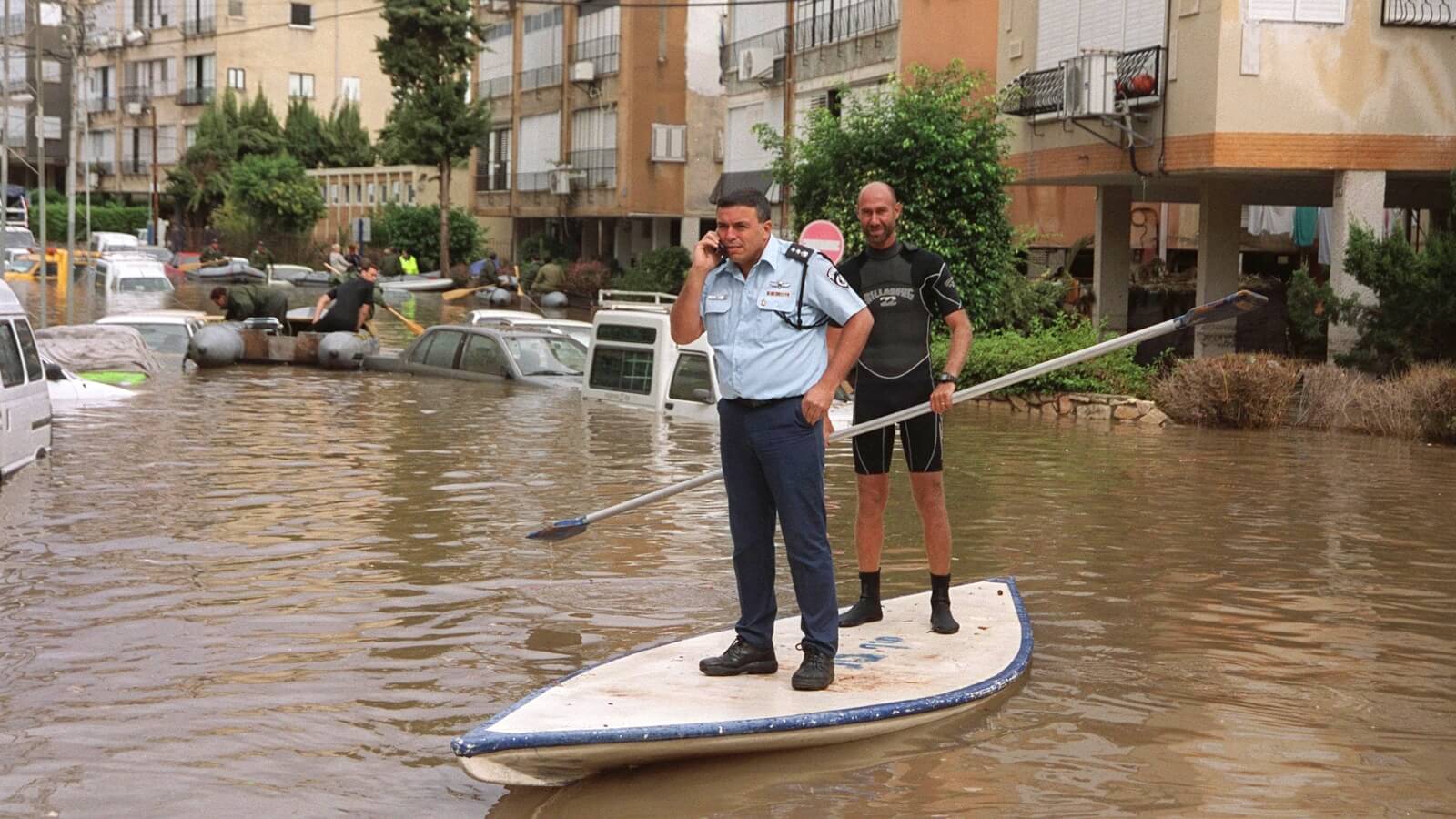Last week we finished celebrating Sukkot, after which the rains are supposed to come - and unfortunately, also the floods. Nature has already developed an excellent tool to deal with this problem: streams, and now it is only necessary that the decision makers in Israel learn from it what needs to be done
A few days ago we finished the seven days of Sukkot and the Simchat Torah that concludes them. During the holiday it rained. Still not the shooter we expect.
Rains are a sign of fertility, renewal and revitalization of nature. But rains are not only a source of blessing. According to Jewish tradition, rain that falls during Sukkot and not after it is actually a sign of a curse. This is of course not surprising, since the sukkah, as a temporary structure, is unable to provide proper protection against rains that make it difficult to observe the mitzvah of sitting in the sukkah. But in recent years, it seems that even our permanent residences are not able to provide adequate protection from the rains.
Every winter we come across scenes of floods and inundations that cause damage to property and lives. Last January, for example, the late Moti ben Shabbat lost his life while trying to rescue family members from flooding in the Nahariya River, and Stav Harari and Dean Shoshani drowned after being trapped in an elevator during flooding in the HaTikva neighborhood in Tel Aviv.
According to experts, the flooding phenomenon is expected to continue to worsen. The climate crisis causes the rain patterns in our region to change. Heavy rain events, where a large amount of rain falls in a very short time, will become more and more common. Another process is added to climate change, which is the significant development that Israel has experienced in recent decades. Water needs spaces to flow in, collect in and seep into the ground. The development approach in Israel has always been that open spaces within the cities are untapped building potential. "Nalbishach is made of concrete and cement" wrote Alterman, who did not take into account that concrete and cement do not absorb rain.
Nature has a wonderful and efficient system for dealing with rainfall: streams. Unlike drainage pipes and closed canals, which are limited by the capacity of the water they can drain, the natural structure of streams allows variable amounts of water to collect and flow through them. While concrete canals increase the strength of the flow of water and the damage from it, the meandering shape of streams moderates it. However, unfortunately, the State of Israel has since its establishment declared war on its possessions. Our streams have been diverted from their natural place, polluted, covered with concrete and turned into invisible drainage pipes underground. We pay the price of these actions today.

Today, rainwater that collects the dirt on our streets flows through pipes to the sea, polluting it and wasting water, which is, as we know, one of our most precious resources. When rains collect in streams and tributaries, aquatic plants purify them and help introduce them into the groundwater. Healthy streams cool their environment - an important service in a hot country like ours - and serve as a fertile habitat for a variety of species, many of which are in danger of extinction. And no less important, healthy streams are a unique natural gem, which the people who live near them enjoy.
In recent years, there has been increasing recognition of the significant value of streams in the world. Many countries have worked and are working to restore their streams and return them to their natural state. Closed water conduits are canceled and the streams that were locked in them for decades are "coming to light". One of the most famous of these projects is the restoration of the Chung-gi River in Seoul, the capital of South Korea. In the 70s, the river was dammed for the purpose of building a highway, similar to the Ayalon Routes project. In 2000, the Seoul municipality decided to remove the road and restore the river and its banks. Two years after the end of the project, the level of air pollution in the area decreased by 20 percent, the average temperature decreased by 3.6 degrees Celsius and species that disappeared from the city are now able to thrive in a metropolis of 25 million inhabitants. The quality of life of the residents of Seoul has improved dramatically, as well as the city's ability to deal with floods.
A government decision was recently made in Israel to promote infrastructure and flood risk management. The government decision instructs the relevant government ministries to act in a variety of ways to improve Israel's preparedness for flood events. The Nahalim option is mentioned, incidentally, in one subsection of the decision. In other words, instead of moving forward and recognizing that nature cannot be tamed, we once again choose to plan and build against it. For the impending rainy season, it is time to embrace a new national development ethos. One that embraces nature and does not fight it. the knowledge required for this Already exists, it's just a matter of priorities. Let's put the streams of Israel at the head of our happiness.
עAnd on the topic on the science website:
